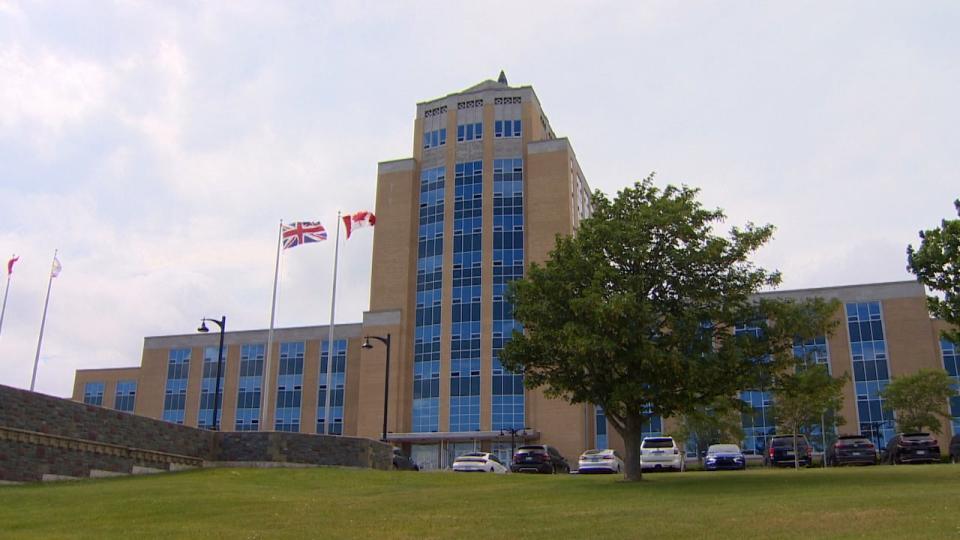



A national conservative think tank says $10-a-day child care isn’t making it easier for parents to access care in Newfoundland and Labrador. (Getty Images)
A provincial child-care advocacy group says governments need to commit to pushing $10-a-day child care forward in Canada, but a conservative think tank says data shows it isn’t working as intended in Newfoundland and Labrador.
Yolande Pottie-Sherman, a member of the steering committee of Child Care Now N.L., told CBC Radio $10-a-day child care has served as a major step forward to enhance the accessibility of child care. The group wants to see enhancements continue, and began 10 days of advocacy for the program on Wednesday — the National Day of the Child.
“That early learning that children are doing during the ages of zero to five is so critical for the rest of their development. It really is the building blocks for helping them to meet their full potential,” Pottie-Sherman said.
“We need to keep going with this program, stick with it…. All political parties and all governments need to get on board and commit to making this happen.”
Newfoundland and Labrador signed on to the federal government’s $10-a-day child-care plan in 2021, promising to create 6,000 new child care spaces along with a pre-kindergarten program.
A news release issued Nov. 4 from the Department of Education said families can now access approximately 10,900 $10-a-day child-care spaces, with an additional 2,100 in development.
Pottie-Sherman said parents who have been able to avail of $10-a-day spaces say it’s been key for their families, saving them money and allowing them to go back to their careers.


The Newfoundland and Labrador government says there are around 10,900 $10-a-day child-care spaces in the province. (Curtis Hicks/CBC)
“Having access to a $10-a-day, high-quality child-care space gives [parents] that piece of mind that [they] can do both. And that’s really important,” she said.
But while some are having success with the program, many still remain on wait lists as demand for the spaces exceed supply and the number of available early childhood educators.
Pottie-Sherman said she believes the province has taken steps to attract ECEs to the province — like the implementation of a wage grid and a benefits plan — but there’s more to be done.
“We don’t have enough of those spaces. It’s important to note, though, that we are moving forward and access is increasing,” she said. “Let’s not ignore that.”
An email to CBC News from the Department of Education confirmed the Early Learning and Child Care Medical Benefits Program was launched in October. The program is cost-shared by the province and supported by the Association of Early Childhood Educators Newfoundland and Labrador through Blue Cross.
Coverage is available for ECEs and those in training, along with other staff working in child care and regulated family care providers. The coverage requires employees of a regulated provider participating in the province’s operating grant program to work 20 hours a week for at least three months.
The province expects to have around 700 people enrolled in the program by the end of the year, the department said.
Government red tape hampering program, think-tank says
Meanwhile, a conservative think-tank says the shortage of ECEs and a significant amount of government red tape has led to the program not performing at its best.
“One of the main troubles that is going on is just the lack of staff in the sector. People have described it as something of a workforce crisis,” Matthew Lau, a researcher at the Fraser Institute, told CBC Radio Monday.
Lau said research from Statistics Canada show 67 per cent of Newfoundland and Labrador families in search of child care have had trouble finding it — the highest rate in the country, he said, and more than double the 33 per cent who had difficulty in 2019.
The number of children between the ages of zero and five in child care has also dropped over that period, he added, from just over 15,000 in 2019 to around 12,000 in 2023.
“Reduced number of children using child care, worse child-care access, those all point in the other direction,” Lau said. “I don’t see how the government can really say that things are getting better.”
Lau said he believes some of the concerns parents and child-care operators have could be lightened if more control was given to operators. He’d like to see the government cut down on red tape that would make creating spaces easier.
“With government control, there’s been a lot of operational problems for child care. So for example, a lot of, or at least a number of child cares in the summer reported receiving their operating grants late — which is a real hindrance in terms of trying to keep their centres open,” he said.
“Operators have also complained about red tape and administrative burden, which is, again, another barrier.”
Download our free CBC News app to sign up for push alerts for CBC Newfoundland and Labrador. Sign up for our daily headlines newsletter here. Click here to visit our landing page.